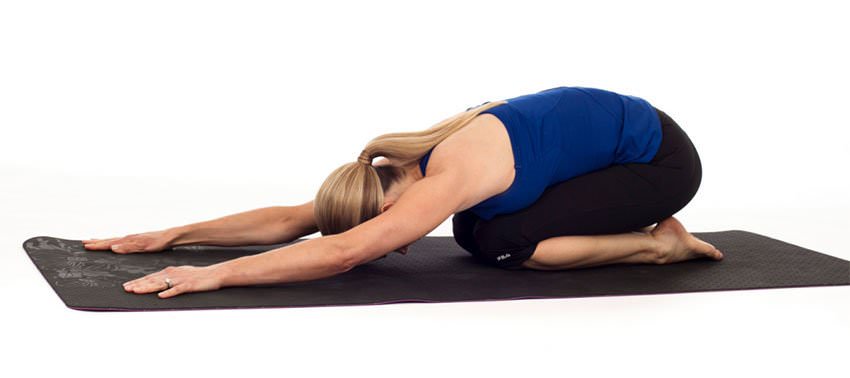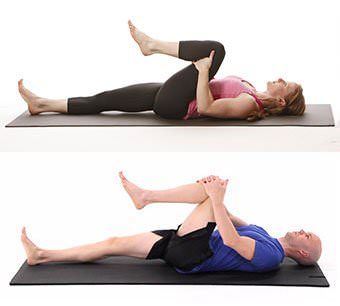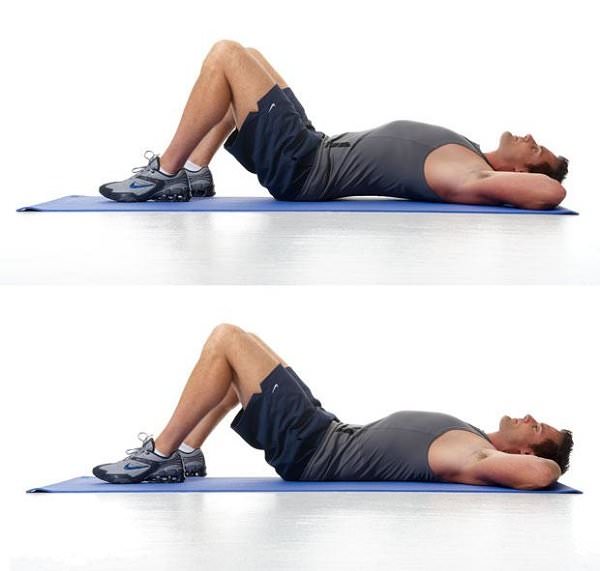4 Stretches To Ease Lower Back Pain
“My back is killing me.” These five words are said by co-workers, family, friends, almost every person we regularly come in contact with will say them sooner or later. In fact, a study performed at the University of North Carolina found that more than an overwhelming 80 percent of people will experience an episode of back pain at some point in their life. As people age, often the spine will experience degenerative changes. As these changes occur, there is less space between the vertebrae, which can increase back pain. When the spine is flexed, pressure is off-loaded. Because of this, a flexion based program is often used to help relieve symptoms of lower back pain. Here are four stretches for lower back pain that almost everyone can do.
1. Prayer Stretch
Tucking legs underneath, sit back on the heels and bend forward at the waist, extending arms out over the head onto the floor in front. (The goal is to get length in the lower back muscle). Hold for 30-60 seconds and sit back up. Repeat 3-5 times.
2. Single Knee to Chest
Hip tightness is a frequent contributor to lower back pain. In order to stretch the hamstrings, lower back, and glutes, lie on your back with one knee bent, and one leg straight. Place hands behind the leg and pull back towards your chest until a light stretch is felt down the back of the leg. You can also place hands over the bent leg on the shin or knee and pull towards your chest. Hold for 30-60 seconds, switch legs and do the same thing. Repeat 3-5 times for each leg.
Safe, Effective Treatment for Low Back Pain
3. Piriformis Stretch
The piriformis is a small muscle that runs diagonally through the glutes. It is one of the external rotators of the hip and will become tight in people who spend significant time sitting, driving, or climbing stairs. An inflamed piriformis can irritate the sciatic nerve which passes through it. To perform this stretch, lie flat with one knee bent. Cross the ankle of the opposite leg to be stretched over the bent knee. Pull knee across towards the chest and hold for 30-60 seconds. Switch legs and repeat same action. Repeat 3-5 times for each leg. See a video on how to perform this stretch here.
4. Core Stability – Pelvic Tilt
Lack of core control and stability is a key player in lower back pain. When the abdominal muscles are not performing, the muscles of the lumbar spine have to work harder to stabilize the body in balance.  An excellent way to improve core stability is to lie flat with the knees bent up. Tighten abdominal muscles (as if bracing for a punch to the stomach) and press the small of the back into the floor. Hold this contraction for 10 seconds and repeat 10-20 times. You can either have your arms resting by your sides or behind your head, depending on what’s more comfortable. With this stretch, it is important remember:
An excellent way to improve core stability is to lie flat with the knees bent up. Tighten abdominal muscles (as if bracing for a punch to the stomach) and press the small of the back into the floor. Hold this contraction for 10 seconds and repeat 10-20 times. You can either have your arms resting by your sides or behind your head, depending on what’s more comfortable. With this stretch, it is important remember:
- Keep your feet flat on the floor
- Keep your shoulders pressed to the floor, but relaxed
- Do not hold your breath as you perform this exercise
****
While lower back pain is extremely common, it is not something you have to live with every day. Improving hip flexibility and core stability as well as lengthening the back muscles by stretching can help reduce the symptoms of lower back pain. However, if your back pain is chronic, the above stretches may help but additional treatment may be warranted.
Read more on safe, non-invasive and non-addictive options to alleviate back pain: